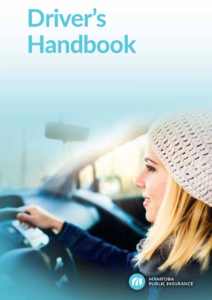MANITOBA MOTORCYCLE PRACTICE TEST 2023
The Manitoba motorcycle licensing process involves several stages. First, individuals obtain a Class 6L learner’s license by passing a written test and vision test. During the learning period, learners must ride with a licensed motorcyclist, avoid carrying passengers, and adhere to time restrictions. After gaining experience, a practical motorcycle skills test evaluates riding abilities. Successful completion leads to a full Class 6 motorcycle license, permitting solo riding, passenger carriage, and unrestricted hours. Staying updated with official sources is crucial due to potential changes in the process.
Frequently Asked Questions about Manitoba Motorcycle Practice Test Online
The Manitoba Motorcycle Test is a written and practical examination conducted by Manitoba Public Insurance (MPI) to assess an individual’s knowledge and skills related to motorcycle operation and road safety.
To obtain a motorcycle license in Manitoba, you need to complete a series of steps, including passing a written knowledge test, a road test, and meeting specific requirements based on your desired license class (Class 6L, Class 6M, or Class 6).
- Class 6L: This is a learner’s license that allows you to operate a motorcycle under certain restrictions. It requires passing a knowledge test and carrying your learner’s permit for a designated period before taking the road test.
- Class 6M: This is an intermediate license that allows you to operate a motorcycle with fewer restrictions than the learner’s license. You need to pass the road test to obtain this license.
- Class 6: This is a full and unrestricted motorcycle license. To obtain it, you must have held the Class 6M license for a specific period and meet certain criteria.
The Manitoba Motorcycle Test consists of two main components: a written knowledge test and a practical road test. The written test assesses your understanding of road rules, motorcycle safety, and other related topics. The road test evaluates your practical riding skills in real-world conditions.
You can prepare for the written knowledge test by studying the official Manitoba Driver’s Handbook, which includes information about motorcycle rules, road signs, and safe riding practices. There are also practice tests available online that can help you become familiar with the types of questions that might be asked.
On the day of the road test, you should bring your valid Class 6L or Class 6M learner’s license, appropriate protective gear (helmet, gloves, eye protection, etc.), a roadworthy motorcycle, and any other documentation or forms required by MPI.
You can book a motorcycle road test through the MPI website or by visiting an MPI Service Centre in person. You’ll need to provide your personal information, license details, and choose a convenient testing location and date.
If you fail either the written knowledge test or the road test, you’ll receive feedback on your performance and areas where you need improvement. You’ll have the opportunity to retake the test after a waiting period. Keep practicing and addressing the areas where you struggled before attempting the test again.
- The Manitoba Driver's Handbook contains all the essential information you need to know for the Class 7L test. Familiarize yourself with road signs, rules of the road, and safe driving practices. Make sure to pay extra attention to sections covering right-of-way, parking regulations, and driving in various weather conditions.
- Numerous online resources provide practice tests that closely resemble the actual Class 7L test. These tests can help you assess your knowledge, identify areas of weakness, and become more comfortable with the format and types of questions you'll encounter on the real test.
- The Class 7L test emphasizes safe driving practices and an understanding of defensive driving techniques. Learn how to anticipate potential hazards, maintain a safe following distance, and respond appropriately to unexpected situations. Emphasize the importance of observing your surroundings and adapting to different driving conditions.
- Put theory into practice by spending time behind the wheel with a supervising driver. Practice various maneuvers, such as parking, lane changes, turns, and merging onto highways. Practicing in different weather conditions and at different times of day can help you gain confidence and adaptability as a new driver.
- On the day of the test, stay calm and focused. Ensure you get enough sleep the night before, have a healthy breakfast, and arrive at the testing center with plenty of time to spare. During the test, read questions carefully, take your time, and don't rush through the answers. If you encounter a question that stumps you, move on to the next one and come back to it later if needed.

